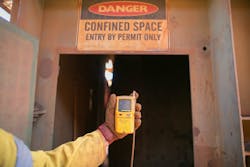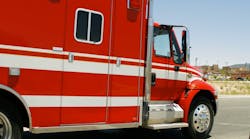Hydrogen Sulfide—or sour gas—is the second most common cause of workplace gas inhalation fatalities following carbon monoxide, with the effects of being exposed including shock, convulsions, rapid unconsciousness, or even worse, death.
Failure to protect employees from exposure can not only result in life threatening injuries, but also OSHA fines reaching more than $400,000.
Hazard in low-lying areas
The highly toxic gas can occur naturally or during processes inherent to many industries—including oil and gas—and exist in sewers, well water, and oil and gas wells. It often collects in low-lying and enclosed spaces such as manholes, sewers, and underground telephone vaults, making work in confined spaces potentially very dangerous.
In fact, Hydrogen Sulfide recently claimed the lives of a 44-year-old man at a pump house in Texas and his 37-year-old wife who went to check on him.
Safety training
Industry operators and contractors can better protect their workers from hazardous conditions, such as exposure to Hydrogen Sulfide, and ensure safety compliance by implementing comprehensive safety training programs that meet requirements set forth by regulatory agencies including but not limited to OSHA and the EPA.
By staying up to date on safety measures associated with Hydrogen Sulfide ensures that workers in the field are trained to identify the dangers of this invisible threat and can prevent lethal exposure.
Eighty percent of training information is forgotten after two days, so refresher courses can assist with the fundamental measures needed to recognize and respond to Hydrogen Sulfide poisoning, keeping companies compliant with federal guidelines, and learning how to utilize PPE to prevent poisoning.
You can learn about these training programs from companies such as Veriforce, which provides software and services meant to enhance workforce and community safety.





